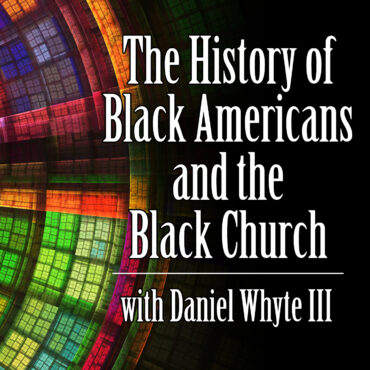
The Family, Religion, and Society in Africa Before the Slave Trade
Our Scripture verse for today is Matthew 2:13-15 which reads: “And when they were departed, behold, the angel of the Lord appeareth to Joseph in a dream, saying, Arise, and […]
 play_arrow
play_arrow
The fight over public education, from Texas to the White House podcast
 play_arrow
play_arrow
 play_arrow
play_arrow
[Holiday Voices] My Favorite Holiday Memory With Nikki Cheak podcast
 play_arrow
play_arrow
Zig Ziglar: “What Happens Out There isn’t Nearly as Important as What Happens in Here.” podcast
 play_arrow
play_arrow
 play_arrow
play_arrow
Week 16 – Tom Brady podcast
 play_arrow
play_arrow
Week 16 – Peter King on Injuries in the League, Philip Rivers, and the Broncos on Top podcast
 play_arrow
play_arrow
 play_arrow
play_arrow
Deebo & Joe – Browns fall to Bears, Mahomes tears ACL, Bengals ELIMINATED! Steelers-Dolphins preview podcast

Our Scripture verse for today is Jeremiah 13:23 which reads: “Can the Ethiopian change his skin, or the leopard his spots? then may ye also do good, that are accustomed to do evil.”
Our BA and BC quote for today is from the scientist and surveyor Benjamin Banneker who helped survey the borders of Washington D.C.. He said, “It is the indispensable duty of those, who maintain for themselves the rights of human nature, and who possess the obligations of Christianity, to extend their power and influence to the relief of every part of the human race from whatever burden or oppression they may unjustly labor under.”
In this podcast, we are using as our texts: From Slavery to Freedom, by John Hope Franklin, The Negro Church in America/The Black Church Since Frazier by E. Franklin Frazier and C. Eric Lincoln, and The Black Church In The U.S. by William A. Banks.
Our topic for today is “European and Asian Interest in the Slave Trade” from John Hope Franklin’s book, From Slavery to Freedom. He writes:
When the Christians of Western Europe began to turn their attention to the slave trade in the fifteenth and sixteenth centuries, they were not introducing a new practice. Although they displayed much originality in approach and technique, they were engaging in a pursuit that had been a concern for countless centuries. As a matter of fact, slavery was widespread during the earliest known history of Africa as well as of other continents. Doubtless there was cruelty and oppression in African slavery as there was anywhere that the institution developed. At least in some portions of Africa there was no racial basis of slavery. The Egyptians enslaved whatever peoples they captured. At times those peoples were Semitic, at times Mediterranean, and at other times blacks from Nubia. Slavery in the Greek and Roman empires is well known. In both empires the traffic in human beings from western Asia and North Africa brought a continuous stream of slaves to perform personal services and to till the fields for the ruling class. Neither in Greece nor Rome was menial service regarded as degrading. The opportunities for education and cultural advancement were, therefore, opened up to slaves. It was not unusual to find people in this class possessing a degree of intelligence and training not usually associated with slaves.
When the Muslims invaded Africa, they contributed greatly to the development of the institution of slavery by seizing women for their harems and men for military and menial service. By purchase as well as by conquest, the Muslims recruited African slaves and shipped them off to Arabia, Persia, or some other Islamic land. As kings and princes embraced Islam, they cooperated with the Arabians in the exportation of human cargo. Long before the extensive development of the slave trade by Europeans, many of the basic practices of the international slave trade had already been established. It is to be noted, however, that slavery among the Muslims was not an institution utilized primarily for the production of goods from which wealth could be derived. There were no extensive cotton, tobacco, and sugarcane fields in Arabia, Persia, and Egypt. Slaves in these lands were essentially servants, and the extent of the demand for them depended in a large measure on the wealth of the potential masters. Slavery was, therefore, a manifestation of wealth, and the institution showed little of the harshness and severity that it possessed in areas where it was itself the foundation on which wealth was built. Although becoming Muslims did not release slaves from their duties, it did have the effect of elevating their standing and enhancing their dignity among others. While in the face of continued enslavement this effect was of doubtful value, it could have been viewed by slaves of a later and a more ruthless system as a straw to which to clutch.
It was the forces let loose by the Renaissance and the Commercial Revolution that created the modern institution of slavery and the slave trade. The Renaissance provided a new kind of freedom—the freedom to pursue those ends that would be most beneficial to the soul and the body. It developed into such a passionate search that it resulted in the destruction of long established practices and beliefs and even in the destruction of the rights of others to pursue the same ends for their own benefit. As W. E. B. Du Bois has pointed out, it was the freedom to destroy freedom, the freedom of some to exploit the rights of others. If, then, people were determined to be free, who was there to tell them that they were not entitled to enslave others?
Coupled with this new concept of freedom was the revitalized economic life of Europe that was brought forth by the Commercial Revolution. The breakdown of feudalism, the rise of towns, the heightened interest in commercial activities, and the new recognition of the strength and power of capital, all of which were essential elements of the Commercial Revolution, brought about a type of competition characterized by ruthless exploitation of any commodities that could be viewed as economic goods. The rise of powerful national states in Western Europe—Spain, France, Portugal, Britain, and, later, Holland—provided the political instrumentalities through which these new forces could be channeled. While the state acted as referee for competitors within its borders, it also served to stimulate competition between its own merchants and traders and those of other countries. The spirit of the Renaissance, with its sanction of ruthless freedom, and the practices of the Commercial Revolution, with its new techniques of exploitation, conspired to bring forth new approaches to the acquisition of wealth and power. Among these was establishment of the institution of modern slavery and the concomitant practice of importing and exporting slaves.

Our Scripture verse for today is Matthew 2:13-15 which reads: “And when they were departed, behold, the angel of the Lord appeareth to Joseph in a dream, saying, Arise, and […]

Copyright Blackpodcasting 2025